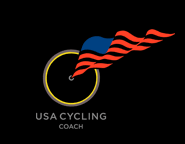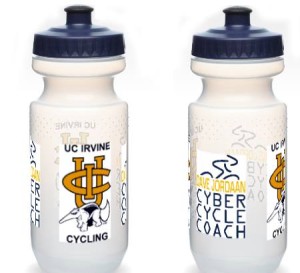Cramps are strong involuntary muscle contractions. They can occur at any time though they are most common during or shortly after hard exercise. They can occur in any muscle, though in cyclists they are most common in the quads, hamstrings and calves. They can be so strong that they cause you to launch out of a chair or actually pull a muscle.
There are a myriad of anecdotal and homeopathic ‘recipes’ for preventing cramps including pickle juice, quinine, etc. but before you reach for grandma’s solution I suggest you 1st review the scientifically proven causes of cramps – on a fundamental level they are all the same. When you move, your brain sends signals to your muscles requesting a contraction. The central nervous system receives feedback on the strength of the contraction that has occurred, from which it can make fine adjustments so that you can make a controlled movement. If the feedback says that the contraction is harder than expected, the brain can send instructions to contract less. If the feedback says the contraction is weak, the brain can send a signal to contract more. As a muscle fatigues, the brain sends more signals to tell the muscle to contract to get the same strength of contraction. When the muscle becomes too fatigued to do what is asked of it, the brain sends a continuous contraction signal, which initiates a cramp.
Causes of cramps and how to correct them: Anything that fatigues a muscle can bring on a cramp, and anything that keeps a muscle fresh helps prevent cramps. Talk to your coach about which of the following might contribute to your particular problem and how to train to prevent or resolve;
- Inadequate training: You may cramp towards the end of a long or hard ride simply because you have not trained adequately for the distance or the intensity of your ride. Make gradual increases to volume and intensity.
- Pushing a big gear: One clue that you may be doing this is if you find yourself standing each time you need to accelerate. Another clue is measuring your cadence below 85 rpm for much of a hard ride. The cure? Switch to a lower gear. Spin to save your legs. Get a larger rear cog or a triple crankset if necessary.
- Dehydration: Muscles don’t contract well if they don’t contain their normal amount of water. Stay hydrated.
- Fuel: Muscles can’t contract if they don’t have a good supply of glucose. Keep eating carbohydrate rich foods on longer rides. Eat something at the start of the ride, after about 30-40 minutes and every 15-20 minutes thereafter. Aim for about 300 calories per hour if you are under 150 pounds and 350 if you are over 150 pounds.
- Electrolyte balance: Muscles will cramp if they don’t contain their normal amounts of sodium, potassium, calcium and magnesium. Those amounts change during exercise. Salt your food and eat plenty of bananas. If you don’t eat a lot of dairy, take a calcium supplement or eat plenty of brassica veggies (collards, kale, cabbage, broccoli, Brussels sprouts and cauliflower). Calcium based antacids such as Tums have cured many cases of cramps. Take one before riding and one each hour of the ride if you have been having cramps. Don’t wait for the cramp to take the calcium. Some green vegetables eaten raw, particularly spinach, will leach calcium from your system. Avoid excessive amounts of raw spinach.
- Creatine Monohydrate supplementation: In some people creatine supplementation (especially loading) may cause cramps, especially if the athlete is at all dehydrated. If in doubt, avoid this supplement.
- Tight muscles: Regular stretching of muscles that tend to cramp can reduce the cramping.
- Impaired circulation: Muscles that are not receiving a good blood supply are deprived of oxygen and fuel. They will not recover from one contraction to the next and so will fatigue quickly. Do what you can to correct pressure points on the saddle, in your shoes, in your shorts and anywhere else they might interfere with circulation.
- Heat or cold: On hot or cold days some people will cramp even if they do everything else right. On hot days, do what you can to keep cool. As well as staying hydrated, dribble water on your jersey and shorts and through your helmet every once in a while. Chose shadier and flatter routes on hot days, unless you are racing and don’t have a choice. On cold days, dress warmly.
- Bike Fit: A poorly fit bike may cause some muscles to work harder than necessary, bringing on a cramp. If in doubt, have your coach check your fit.
- Rhabdomyolysis: If cramps are followed shortly by red or brown urine, you may be experiencing a breakdown of muscle tissue with release of muscle contents into the blood. This is a medical problem that needs immediate professional attention to prevent kidney damage. Treatment for acute rhabdomyolysis is high volume IV rehydration.
All information in this program remains the intellectual property of P. Dave Jordaan. Unauthorized use prohibited. Copyright and Distribution protected. © CyberCycleCoach 2006.



